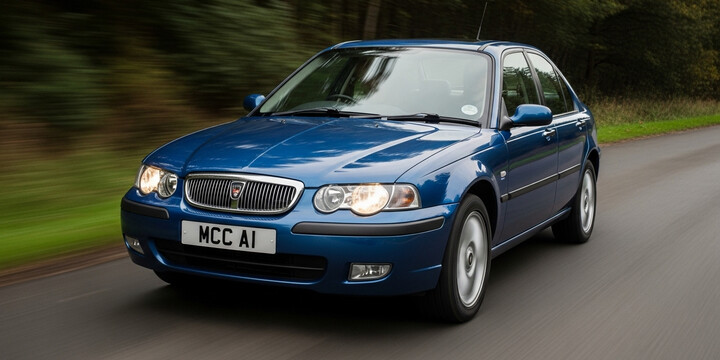
ROVER 45 (2000-05) 4DR SALOON 1.6 16V GSI
The Rover 45 (2000-05) 4DR Saloon 1.6 16V GSI is a practical and reliable family car that holds a solid place in the UK used car market. As a compact saloon, it’s well-suited for daily commuting, small families, or first-time drivers who seek a sensible, economical vehicle with a comfortable ride. Known for its straightforward design and dependable performance, the Rover 45 offers a good balance between affordability and usability. Typically, it’s used for everyday errands and city driving, thanks to its manageable size and decent fuel economy.
What makes the Rover 45 GSI stand out in its class is its reputation for reliability and smooth driving experience, making it a popular choice for budget-conscious buyers looking for a no-fuss vehicle. With an average recorded mileage of around 65,791 miles and a typical history of three previous owners, this model has proven to be a durable option. When compared to similar saloons, the Rover 45 is appreciated for its comfortable interior and straightforward features. Whether you're after an affordable first car or a dependable daily driver, the Rover 45 (2000-05) 4DR SALOON 1.6 16V GSI offers a pragmatic solution worth considering.

average use

The most recent mileage data for the ROVER 45 (2000-05) 4DR Saloon 1.6 16V GSI indicates that approximately two-thirds (66.7%) of the sampled vehicles have recorded mileages between 50,000 and 60,000 miles. Additionally, about one-third (33.3%) of the vehicles have recorded mileages between 90,000 and 100,000 miles. This suggests a significant portion of these vehicles are relatively low mileage, although a notable minority have higher mileage readings in the 90,000 to 100,000 range.

vehicle values

The data indicates that for the ROVER 45 (2000-05) 4DR Saloon 1.6 16V GSI, a significant majority of private sale valuations fall within the £0-£1,000 range, accounting for approximately 67% of observed valuations. The remaining 33% are in the £1,000-£2,000 range. This suggests that most private sellers of this vehicle type tend to value their cars relatively low, possibly reflecting factors such as vehicle condition, mileage, or market demand for this model.

production years

Based on the available data for the Rover 45 (2000-05) 4DR Saloon 1.6 16V GSI, all examined vehicles in the sample were manufactured in 2005. This suggests that, at least for this particular subset, the latest model year (2005) dominates the used vehicle market or data collection, indicating a possible concentration of availability or registration in that year. No vehicles from earlier years within the production range are represented in this dataset.

colour popularity

The data indicates that the main paint colours for the Rover 45 (2000-05) 4-door saloon 1.6 16V GSI are evenly distributed among Gold, Red, and Silver, each accounting for approximately 33.3% of the vehicles. This balanced distribution suggests that these three colours are equally popular choices among owners of this model during that period, with no single colour dominating the market.

ownership cycle

The data indicates that for the ROVER 45 (2000-05) 4-door saloon 1.6 16V GSI, the number of registered keepers is evenly distributed among three groups: one keeper, six keepers, and three keepers, each accounting for approximately 33.3%. This suggests a relatively balanced split in the ownership history, with no single pattern dominating. Such a distribution may imply that the vehicle has maintained a consistent ownership pattern across private and possibly fleet users, without a predominant trend towards long-term ownership or frequent switching.

engine choices

The data indicates that all Rover 45 models from 2000 to 2005, specifically the 1.6 16V GSI saloons, are equipped with a 1,588 cc engine and run exclusively on petrol. This consistency suggests a uniform engine configuration and fuel type across this vehicle variant, highlighting its standardised design during that period.












